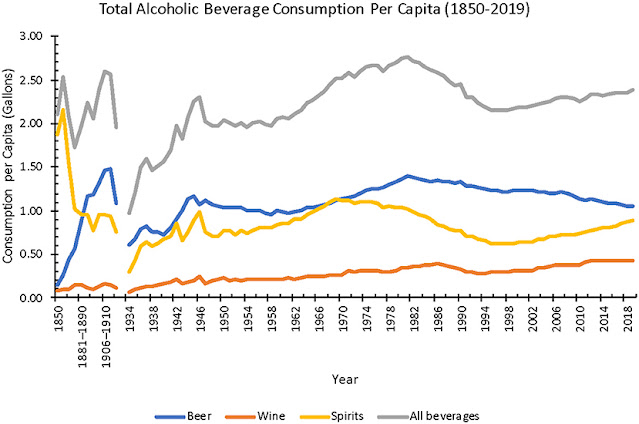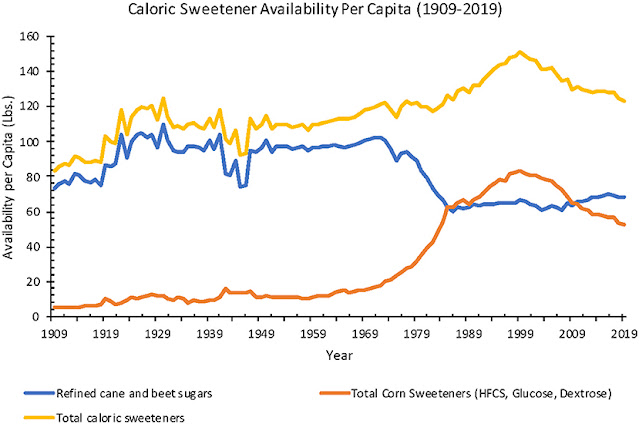
In this blog he published several posts with data on how the diet has changed during the last decades in several countries: in Spain, in the United Kingdom and in the USA. However, the US data were not very segmented and were quite recent, starting in 1965.
A few days ago a new review was published with more information regarding how the North American diet has evolved. This research is titled «Dietary trends in the United States since 1800: lack of association between saturated fatty acid consumption and noncommunicable diseases» (2022), includes availability data, segmented by nutrients and types of food and in some cases goes back up to two centuries. Since it is free access, we can consider it a particularly interesting source for those interested in delving deeper into the topic. .
The work includes a good number of graphs from the last century, which help to easily visualize some relevant results, so he decided to compile them below:
Macronutrients:
Added fats and oils:
Fatty acids:
Fats of animal and vegetable origin:
Food groups:
Red meat, poultry and fish:
Coffee, tea and chocolate:
Alcoholic drinks:
Caloric sweeteners (sugar, honey, syrups, etc.)
It is advisable to read the complete study since in addition to the data shown in these graphs, data on other foods are synthesized in text form, such as cereals, sugary drinks, non-caloric sweeteners and processed foods of various types (fruits, vegetables, meat and cereals). With all this data you can draw your own conclusions.
The authors summarize theirs like this:
«The American diet has changed radically over the past two centuries, with the primary changes being increased consumption of processed and ultra-processed foods (e.g., sugar, refined flour, white rice, and vegetable seed oils) and poultry and reduced consumption of unprocessed foods (e.g., fresh fruits and vegetables) and animal fats (e.g., whole milk, butter, and lard). last two centuries included (1) increase in processed and ultra-processed foods, sugar, seed oils, and poultry; and (2) decrease in butter/lard and solid fats, dairy products (mostly full-fat), fresh fruits, fresh vegetables, and red meat (beef/pork). Ultra-processed foods were rare before 1900, but have increased to more than 50% of the American diet today (44). Saturated fat consumption has remained relatively stable, as lard pork, butter, whole milk and red meat decreased, while margarine, solid fats and other saturated fats of plant origin increased. Meanwhile, consumption of polyunsaturated and monounsaturated fats increased dramatically with the introduction of ultra-processed foods and vegetable and seed oils.
The unprocessed elements of the 19th century diet (animal fats, full-fat dairy products, fresh vegetables, and fresh fruits) were progressively replaced by more processed elements, including seed oils, high-fructose corn syrup, and snacks. and lists of foods to eat. The data do not support the widely reported increase in animal saturated fat during the first 60 years of the 20th century. Rather, polyunsaturated fats and partially hydrogenated fats from vegetable oils progressively replace lard, butter and other fats of animal origin. Throughout the 20th century, rising rates of obesity, diabetes, heart disease, and cancer were compromised by stable consumption of saturated fats. However, large increases in sugar and refined carbohydrate consumption and more modest increases in total calories make refined carbohydrates and total calories fa.«more likely factors than saturated fats in the pathogenesis of noncommunicable diseases.»















Can you be more specific about the content of your article? After reading it, I still have some doubts. Hope you can help me. https://www.binance.com/hu/register?ref=FIHEGIZ8